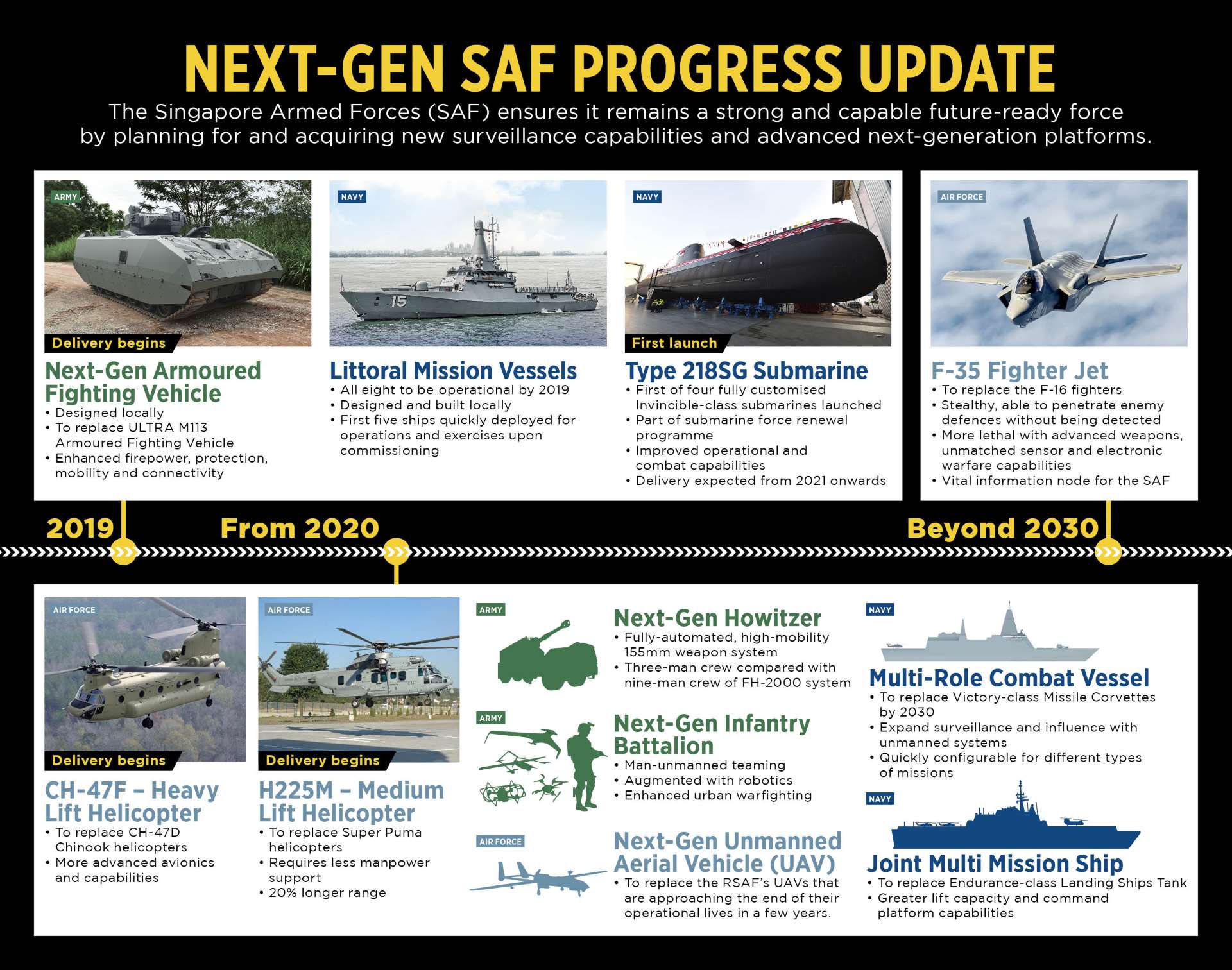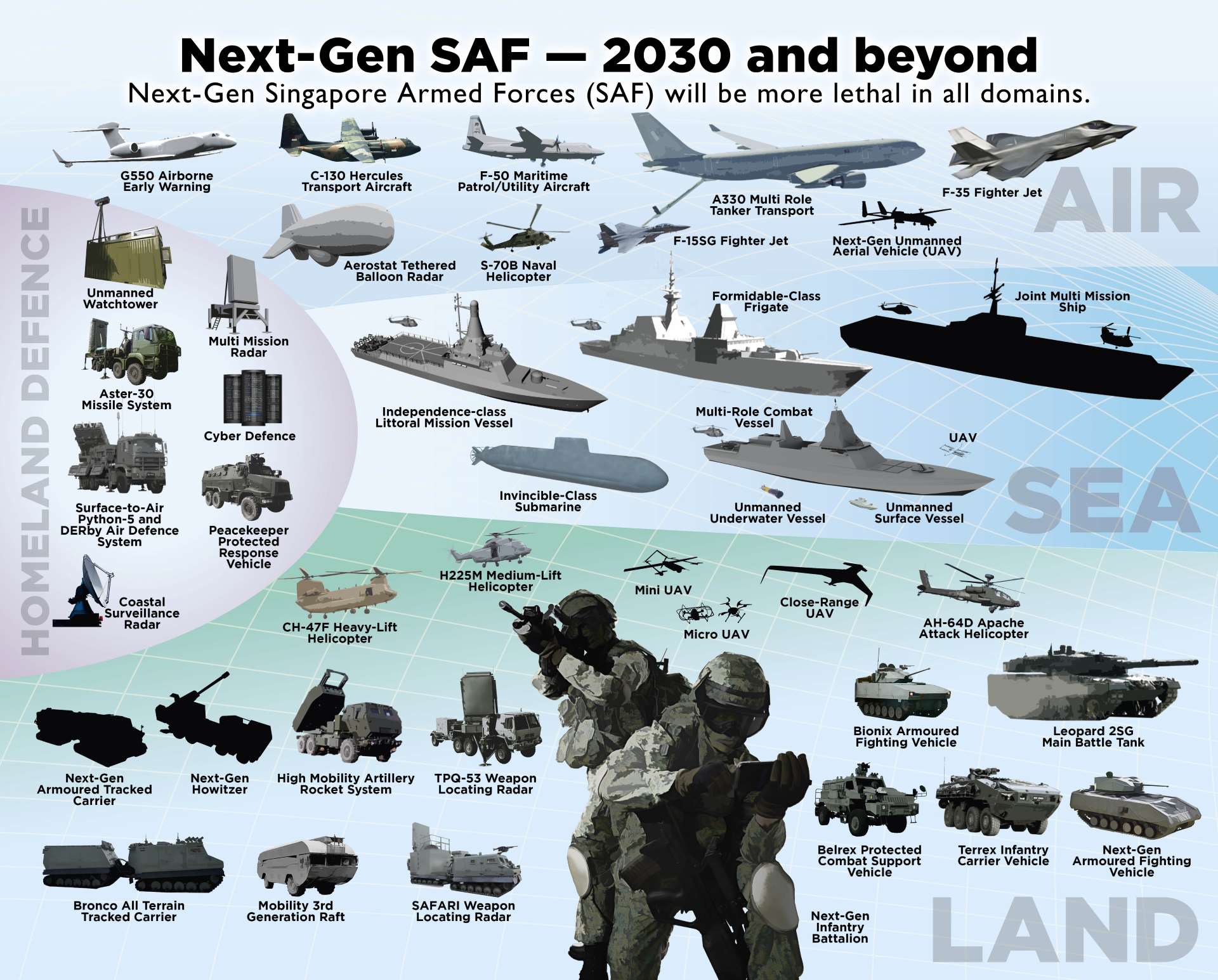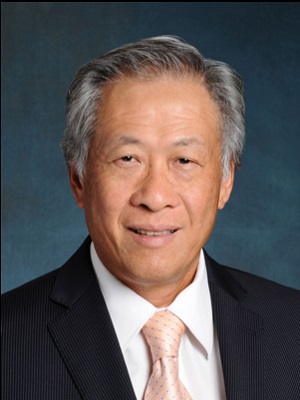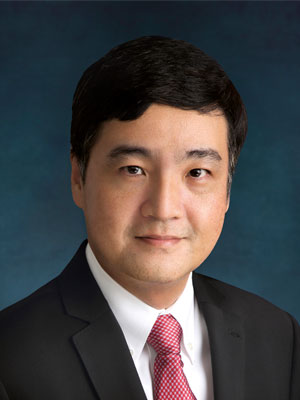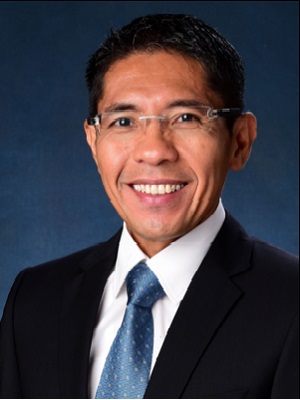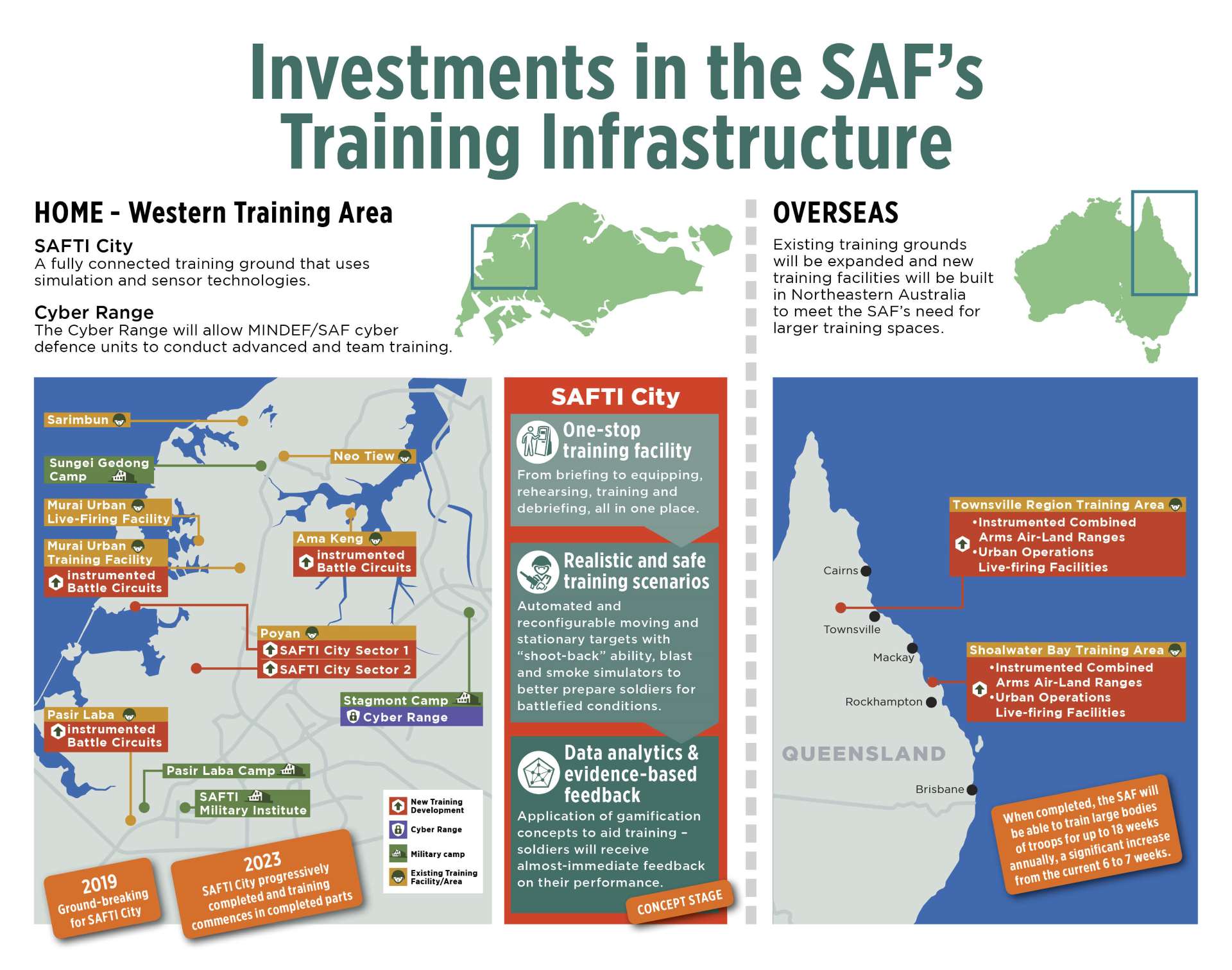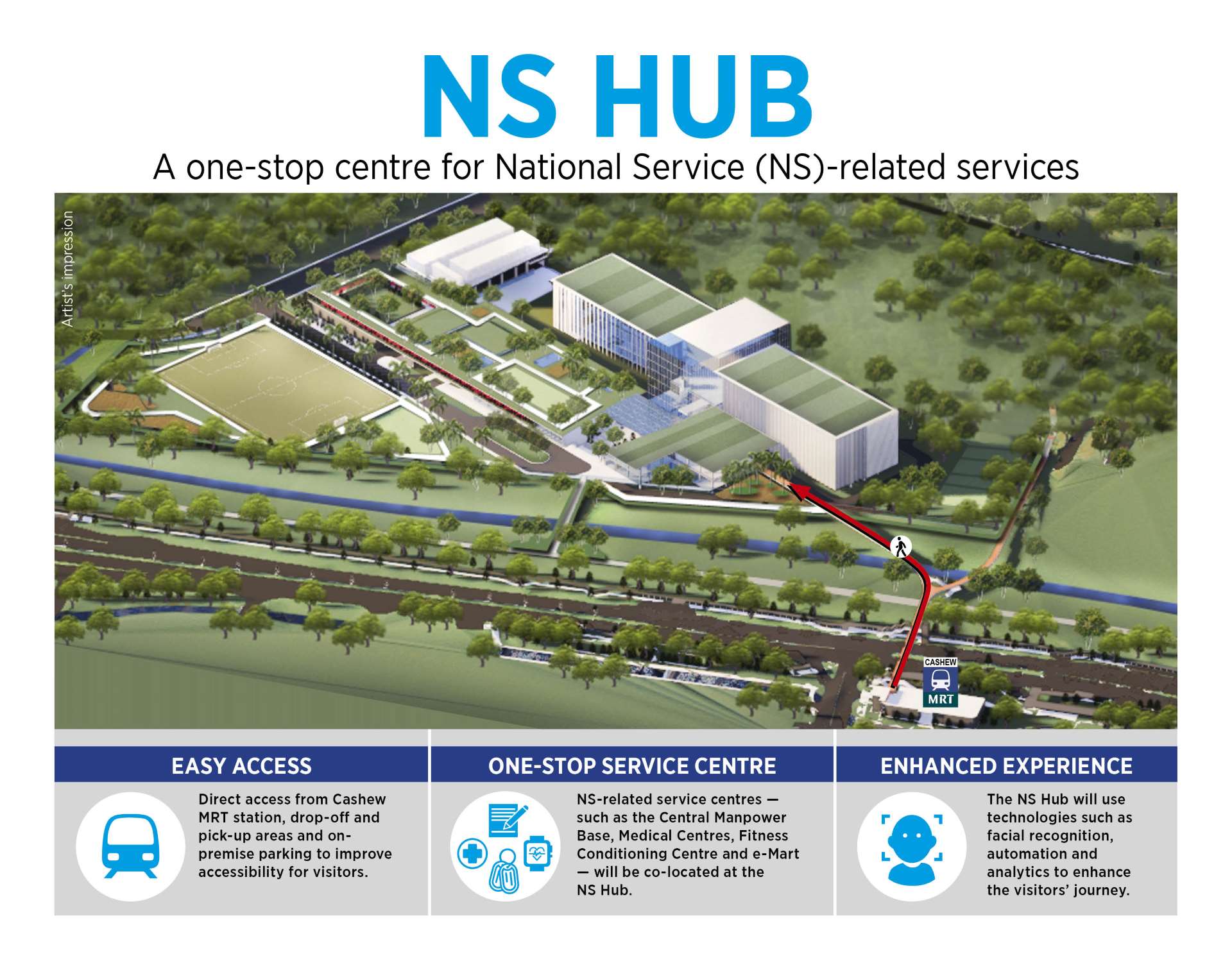We will modernise the Next-Generation SAF, enabling better responses to security threats across the three Services.
F-35 Fighter Jet
F-35s will replace the RSAF's F-16s post-2030. MINDEF will issue a Letter of Request to the US for an initial acquisition of four F-35s before deciding on a full fleet. The price of F-35s has been steadily falling with strong demand from countries around the world. The total cost of ownership of a fleet of F-35s (including maintenance) across its lifespan will also be similar to that of the F-15SGs.
MINDEF will continue to work with the US Department of Defense to optimise operating and maintenance costs.
Click on the image below to view a larger version of the infographic.
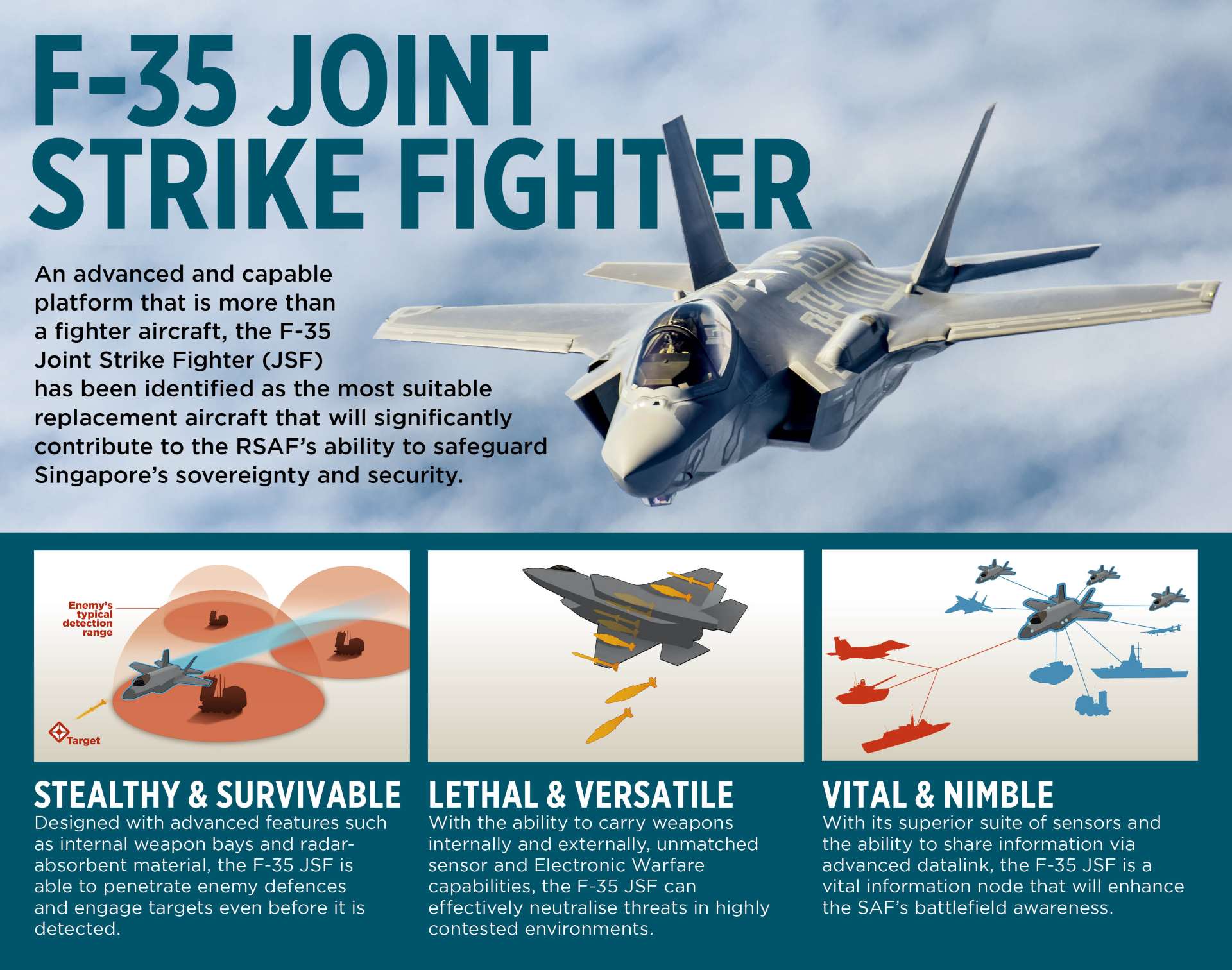
H225M Medium-Lift and CH-47F Heavy-Lift Helicopters
The RSAF will take delivery of H225M medium-lift and CH-47F heavy-lift helicopters to replace the existing Super Puma and Chinook fleets, from 2020 onwards. These new helicopters will add capacity, and be more effective in conducting peacetime Search and Rescue or Humanitarian Assistance and Disaster Relief operations.
Invincible-Class Submarines
Invincible-class submarines will replace the RSN's current submarines by 2025. The RSN's current submarines have been in service for over two decades. The new Invincible-class submarines are custom-designed for longer endurance, and incorporate our latest locally-developed sensors and automated systems designed for optimal use in our surrounding waters.
Multi-Role Combat Vessels (MRCVs)
The new Multi-Role Combat Vessels will replace the ageing Victory-class Missile Corvettes, which have served with distinction since 1989. Delivery is expected to begin from 2025, with full delivery expected around 2030.
Besides improving capabilities, the new MRCVs will be custom-built for lean manning and incorporate technologies to automate certain functions. This results in the MRCV using less manpower – about half the size found in modern frigates. In addition, this will result in operational cost savings of up to 10 per cent, compared to similar-sized frigates.
The MRCVs will also have unmanned air and sea drones to extend their reach and flexibility against threats.
The ageing Landing Ships Tank will also be replaced in the next decade by larger and more flexible Joint Multi-Mission Ships.
Click on the image below to view a larger version of the infographic.
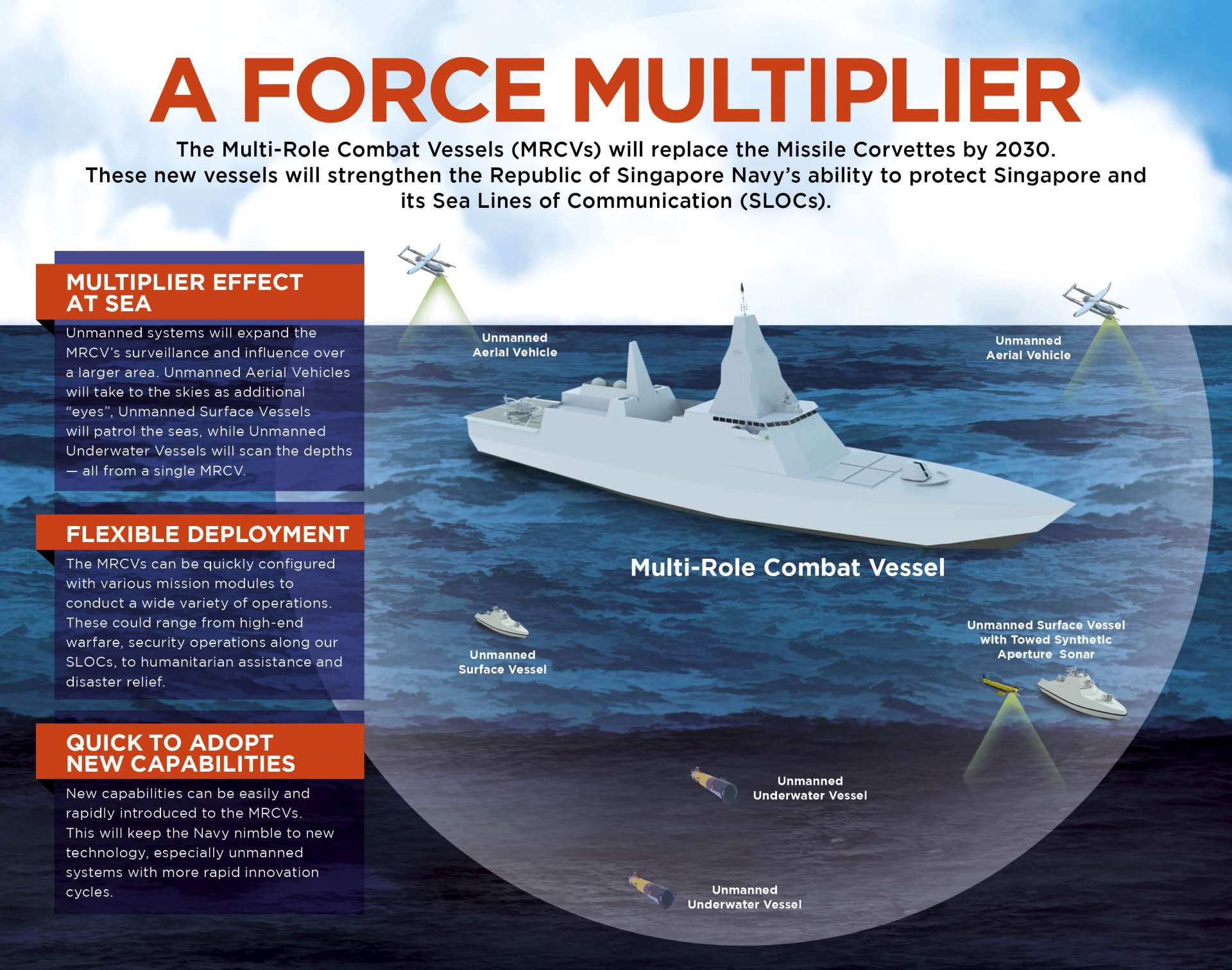
Next-Generation Armoured Fighting Vehicles (AFV)
Next-Generation AFVs will replace the M113 Ultras from this year onward. These AFVs have better armoured protection and mobility through urban environments. The Army will also see the addition of Next-Generation Howitzers with extended range and the ability to conduct precision strikes.
Building a Hybrid Force
The SAF will build a more hybrid force, incorporating more unmanned platforms. These unmanned platforms will complement traditional manned equipment, to enhance responses across the full range of operational scenarios.
- The RSAF's Unmanned Aerial Vehicles (UAVs) will be progressively replaced by newer UAVs with better capabilities over the next few years.
- The RSN's new MRCVs will be equipped with unmanned air and sea vessels.
- The Army's soldiers will use micro-UAVs, which will be particularly useful in dense built-up urban environments.
The Next-Generation SAF of 2030 and Beyond
We will build a modern and capable SAF that can defend Singapore for another generation. By SG75, we will have a state-of-the-art coastal surveillance network and air defence systems to form a shield against incoming threats.
Operating with a Leaner Manpower Pool
The SAF of 2030 and beyond has been designed to be operated with a leaner manpower pool, and factors in the reduction of manpower supply by a third after 2030.
Click the images below to view larger versions of the infographics.
